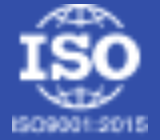Abandon 30 years of grudges! Japan and the United States jointly research 2nm, want to control the global semiconductor supply chain?
According to recent news, Japan will establish a research base for a new generation of semiconductors, and jointly research 2nm semiconductor chips with the United States, which is expected to be widely used in artificial intelligence and other fields. Japanese Minister of Economy, Trade and Industry Hikaru Hagi said that the cooperation between Japan and the United States in the field of semiconductors made him feel the strangeness of fate.
More than 30 years ago, Japan once occupied the world's leading position in the semiconductor field. However, under the suppression of the United States, the market share dropped from 50% to about 10%. Now that Japan and the United States have cooperated again in the semiconductor field, it is thought-provoking.
Japan's semiconductor industry controlled by the United States
After World War II in the last century, the Japanese economy was bleak. For its own development, the United States began to support the Japanese economy and let it provide cheap products to the United States. During this period, the United States allowed Japan to directly use its basic research results, and the Japanese semiconductor industry took this initial development.
In 1970, IBM, which almost monopolized the computer market at the time, announced the use of semiconductor memory in the latest computers. The memory on the computer also began to gradually change from the original magnetic core technology to semiconductor memory.
Optimistic about the semiconductor market. In 1974, the Ministry of International Trade and Industry of Japan took the lead and organized five companies, Hitachi, NEC, Fujitsu, Mitsubishi and Toshiba, and invested 300 billion yen to tackle key problems in semiconductor technology.
With the support of the government, Japanese semiconductors are progressing smoothly. DRAM, the main research result, surpassed the United States in market share in 1982. In 1985, Intel, which dominated the DRAM market, gave up the DRAM business that continued to lose money. In the following year, Japanese semiconductors accounted for the global market. The share reached 46%, surpassing the United States and becoming the first in the world.
According to the data released by the Ministry of Economy, Trade and Industry in 2021, Japanese semiconductors accounted for 50.3% of the global market share in 1988. Among the top ten global companies in 1992, Japan occupied 6 seats, namely NEC (2nd), Toshiba (3rd), Hitachi (5th), Fujitsu (7th), Mitsubishi (8th) and Panasonic (10th).









